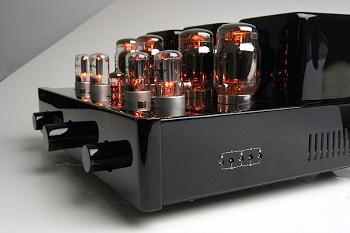Generally speaking, you don't want to drive a SET much beyond 20-30% of its rated power; however, I have experienced enough exceptions to this rule to say that it is more of a rule of thumb rather than an ironclad law.
I would avoid any SET for which measurements are available and that they show issues with bass distortion...this has ramifications throughout the whole frequency range and not just bass. Now if you are going to actively feed it only mid and higher frequencies then that requirement might be somewhat relaxed. However, I have found that even with sensitive, easy to drive speakers the top SETs with serious output iron triumph over those with weedy little output trannies. They have greater transparency, are more relaxed and will have a purer tonality.
IF you are going to push the SET hard then it really pays to look at the design and size of the power supply...if it is under strain that will likely increase distortion and lessen the sense of authority.
I have had good success with SETs and normal speakers but only from the likes of Aries Cerat, KR Audio, Ayon and NAT. I haven't had Lamm in house so it is hard for me to say what they do with normal speakers...although they don't really have a high powered model in the first place.
+1 on the iron. I had a beast of a 300B from China of all places. An ASL. It could drive speakers my other custom 300Bs with off the shelf Tangos, Tamuras and Lundahls couldn't. Likewise my cousin's ML2.1s drive speakers that they shouldn't have any right to do so with.








